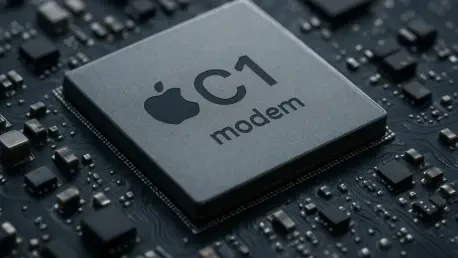In an era where seamless connectivity is no longer a luxury but a necessity, the battle for superior 5G performance has taken center stage among tech giants. A recent comprehensive report by Ookla Speedtest Intelligence has unveiled intriguing insights into the capabilities of Apple’s first in-house C1 modem, featured in the iPhone 16e. Launched earlier this year, this modem has been pitted against the established Qualcomm modem in the iPhone 16 across 21 advanced 5G markets worldwide. The analysis, spanning data collected over several months, dives deep into critical metrics such as download and upload speeds, as well as performance in challenging network conditions. What emerges is a compelling narrative of innovation, where reliability often trumps raw speed. This development signals Apple’s strategic shift toward crafting dependable user experiences, even in the most congested or distant network environments, setting a new benchmark in mobile connectivity standards.
Breaking Down the Performance Metrics
The core of the Ookla report lies in a head-to-head comparison between the C1 modem in the iPhone 16e and the Qualcomm modem in the iPhone 16, focusing on their 5G prowess. Despite sharing identical 6.1-inch designs, the technical specifications differ significantly. The Qualcomm modem supports up to 6CA (carrier aggregation) downlink and uplink MIMO (Multiple Input Multiple Output), offering a clear advantage in peak performance scenarios. In contrast, the C1 modem is limited to 3x downlink aggregation without uplink MIMO capabilities. However, Apple has fine-tuned the C1 for robust low-band coverage, prioritizing stability over speed. This design choice proves particularly beneficial for users at the edges of network coverage or in high-traffic areas. The result is a modem that may not always hit the highest speeds but ensures a consistent connection when it matters most, highlighting a deliberate focus on real-world usability over theoretical maximums in diverse network landscapes.
Delving into specific performance data, the Qualcomm modem demonstrates dominance in median download speeds across 12 of the 21 markets analyzed, including standout results in Saudi Arabia, China, India, and the U.S. For instance, in Saudi Arabia, the iPhone 16 achieved a median download speed of 353.49 Mbps compared to 295.01 Mbps for the iPhone 16e, thanks to superior carrier aggregation on advanced 5G networks. Yet, the C1 modem shines in less optimal conditions, outperforming at the 10th percentile download speeds in 15 markets, indicating better reliability during network strain. Upload speeds further underscore this strength, with the iPhone 16e leading in 15 markets, including a notable gap in Canada at 23.91 Mbps versus 11.57 Mbps for the Qualcomm modem. These figures suggest that while one modem excels in ideal conditions, the other offers a lifeline in challenging scenarios, catering to a broader spectrum of user needs across varied environments.
Regional Variations and Network Dynamics
Performance disparities across regions reveal how local network infrastructure shapes modem effectiveness. In India, the C1 modem holds its own against Qualcomm across major carriers like Vi, Airtel, and Jio, with median download speeds on Jio clocking in at 213.26 Mbps compared to 225.54 Mbps for the iPhone 16. While Qualcomm pulls ahead in peak scenarios, the C1 maintains steadier performance at network edges. In the U.S., the Qualcomm modem leads in median download speeds on networks like T-Mobile and Verizon due to higher carrier aggregation, but the iPhone 16e takes the lead in upload speeds on AT&T and Verizon, as well as consistently at lower percentiles across all carriers. Saudi Arabia shows a similar pattern, with Qualcomm dominating peak download speeds by over 200 Mbps at the 90th percentile, while the C1 modem excels in uploads. These regional nuances underscore the impact of localized 5G deployments on device performance, painting a complex picture of global connectivity challenges.
Japan offers a unique perspective, where the iPhone 16e accounts for a significant share of iPhone 16 series samples due to high demand for compact, cost-effective devices bolstered by subsidies. Here, the C1 modem leads in both median download and upload speeds on most operators, reflecting a market preference for reliability over peak performance. In France, results are more balanced, with median download speeds nearly identical between the two modems, though the iPhone 16e occasionally lags on specific networks. This variation highlights how consumer preferences and network configurations influence modem adoption and effectiveness. Markets with advanced 5G infrastructure tend to favor the Qualcomm modem’s capabilities, while regions with inconsistent coverage or price-sensitive consumers lean toward the consistent performance of the C1 modem, illustrating the diverse priorities shaping mobile technology adoption worldwide.
Strategic Implications for Future Innovations
Looking at the broader trends, a clear trade-off emerges between peak performance and consistent reliability in modem design. The Qualcomm modem in the iPhone 16 consistently achieves higher median download speeds in markets with sophisticated 5G infrastructure, leveraging advanced carrier aggregation to push boundaries in ideal conditions. Conversely, the C1 modem in the iPhone 16e prioritizes dependability, excelling in upload speeds and at the 10th percentile across most markets. This focus benefits users facing less-than-ideal network conditions, such as rural areas or crowded urban centers. Apple’s approach suggests a calculated emphasis on ensuring a stable user experience across varied environments, even if it means sacrificing some top-end speed. This strategy aligns with growing consumer demand for devices that perform reliably under stress, potentially reshaping expectations for what constitutes excellence in mobile connectivity as technology continues to evolve.
Beyond immediate performance metrics, Apple’s development of the C1 modem signals a long-term vision for in-house technology diversification. The company is reportedly working on proprietary Wi-Fi and Bluetooth chipsets, which could further enhance network performance and battery efficiency in future devices. The ongoing refinement of the C1 modem, alongside potential integration of these new chipsets, will likely be pivotal in balancing performance, reliability, and power efficiency within Apple’s ecosystem. As global 5G networks mature over the coming years, these advancements could position Apple to address emerging connectivity challenges more effectively. The insights from the Ookla report lay a foundation for anticipating how such innovations might influence user experiences, particularly in markets with evolving infrastructure, setting the stage for a new era of tailored, dependable mobile technology solutions.
Reflecting on Connectivity Milestones
The analysis of Apple’s C1 modem against Qualcomm’s offering in the Ookla report paints a detailed picture of contrasting strengths that define 5G performance across global markets. While one excels in pushing the limits of speed under optimal conditions, the other carves a niche in delivering unwavering reliability when networks are strained. Regional differences further illuminate how infrastructure and consumer priorities shape these outcomes, with some markets favoring raw power and others valuing consistency. Moving forward, stakeholders can anticipate Apple’s continued focus on refining in-house technologies to address the dual demands of performance and dependability. Keeping an eye on forthcoming device releases and network advancements will be crucial, as these developments promise to refine the benchmarks for mobile connectivity. Exploring how these innovations adapt to diverse global challenges offers a pathway to ensuring that future technologies meet the real-world needs of users everywhere.









